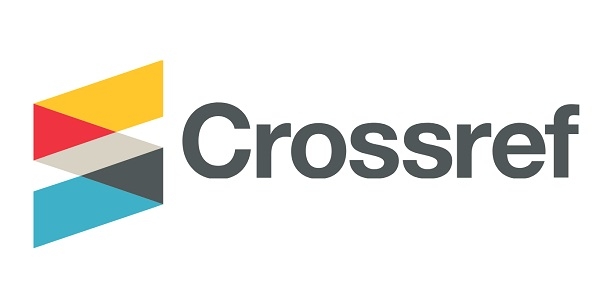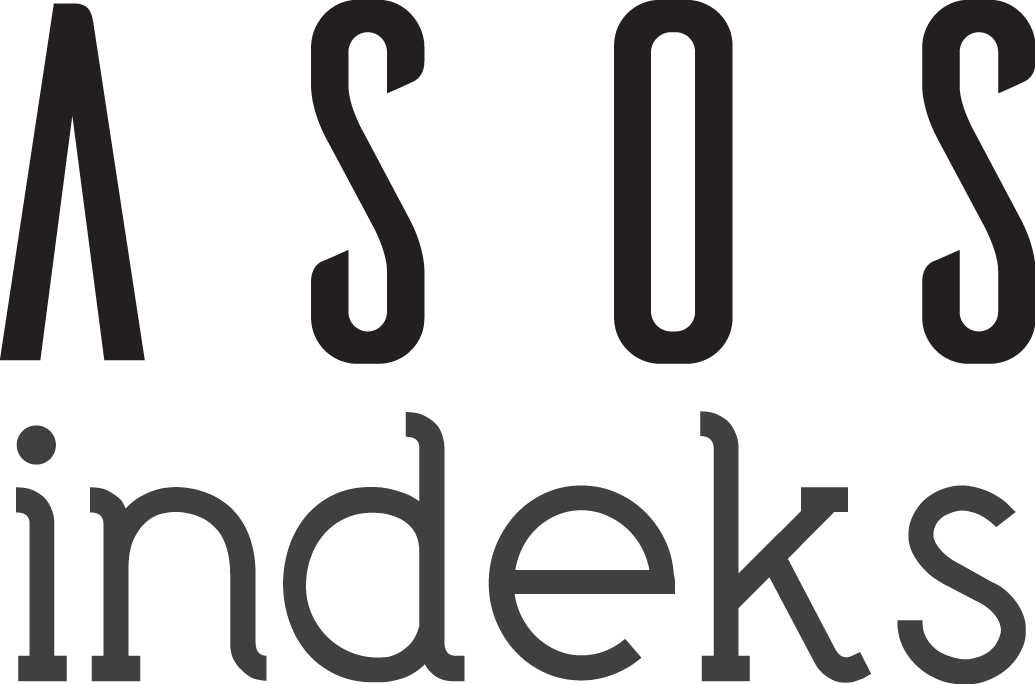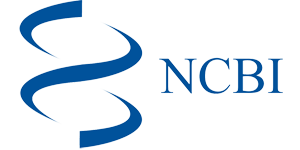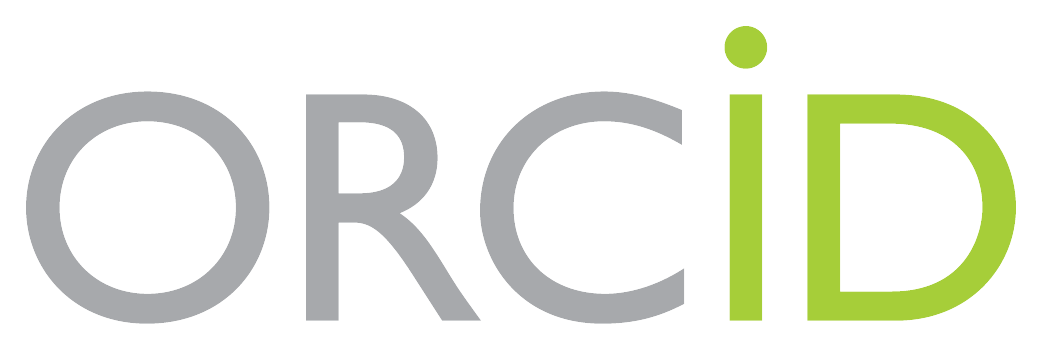The effect of occupational therapy on upper extremity function and activities of daily living in hemiplegic patients
Abstract
Aims: We aimed to investigate the effectiveness of occupational therapy (OT) added to traditional rehabilitation treatments on activities of daily living and upper extremity functions in hemiplegic patients in this study.
Methods: This study was carried out within eighty hemiplegic patients. In the evaluation of the patients before the therapy, age, gender, body mass index (BMI), occupation, education, duration of stroke, stroke etiology, symptomatic side, the presence of systemic diseases and dominant hand data were recorded. The patients were randomized into two groups according to the sealed envelope method. While standard rehabilitation (ST) (50 minutes five days a week for 6 weeks) was applied to the first group, ST (50 minutes five days a week for 6 weeks) and OT (40 minutes three days a week for 6 weeks) were applied to the second group. Functional Independence Scale (FIM), Fugl-Meyer Upper Extremity Assessment of Motor Recovery Scale (FMA) and Action Research Arm Test (ARAT) were evaluated before the treatment and on the 45th day after the end of the treatment.
Results: Our study included 35 male and 45 female patients. There was no significant difference between the two groups in terms of age, gender, symptom duration and stroke etiology. FIM, ARAT and FMA values were found to be increased in both groups compared to pre-treatment (ST; FIM p=0.003, ARAT p=0.011, FMA p= 0.002 OT; FIM p=0.023, ARAT p=0.024, FMA p= 0.012 ). While there was no significant difference in terms of FIM, ARAT and FMA values before treatment in comparisons between groups, all parameters were found to be significantly increased in the OT group compared to ST on the 45th day of treatment (FIM p=0.017, ARAT p=0.021, FMA p= 0. 004).
Conclusion: In this study, OT was applied three times a week for 40 extremity dexterity. While the increase in FIM, FMA and ARAT was significant after treatment in both groups, the increase in the OT group was higher when compared to ST. The results of our study show that both ST and OT are effective in stroke rehabilitation. In addition, it has been clearly proven that more effective results are obtained in upper extremity functions with OT added to ST.
Keywords
References
- Roy-O’Reilly M, McCullough LD. Age and sex are critical factors in ischemic stroke pathology. Endocrinology. 2018;159(8):3120-31. doi. 10.1210/en.2018-00465
- Deb P, Sharma S, Hassan KM. Pathophysiologic mechanisms of acute ischemic stroke: An overview with emphasis on therapeutic significance beyond thrombolysis. Pathophysiology. 2010;17(3):197-218. doi. 10.1016/j.pathophys.2009.12.001
- Potter TB, Tannous J, Vahidy FS. A contemporary review of epidemiology, risk factors, etiology, and outcomes of premature stroke. Curr Atheroscler Rep. 2022;24(12):939–948. doi.10.1007/ s11883-022-01067-x
- Aydilek M, Yasar MF, Yaksi E. The effect of occupational therapy on upper extremity function and daily life activities in stroke patients. J PMR Sci. 2022;25(1):27–33. doi.10.31609/jpmrs.2021-83304
- Li N, Yang T, Yu P, et al. Bio-inspired upper limb soft exoskeleton to reduce stroke-induced complications. Bioinspir Biomim. 2018;24(13):066001. doi. 10.1088/1748-3190/aad8d4
- Alsubiheen AM, Choi W, Yu W, Lee H. The effect of task-oriented activities training on upper-limb function, daily activities, and quality of life in chronic stroke patients: a randomized controlled trial. Int J Environ Res Public Health. 2022;19(21):14125. doi. 10.3390/ijerph192114125
- Nijland RH, Van Wegen EE, Harmeling-van der Wel BC, Kwakkel G. Presence of finger extension and shoulder abduction within 72 hours after stroke predicts functional recovery: early prediction of functional outcome after stroke: the EPOS cohort study. Stroke. 2010;41(4):745–750. doi. 10.1161/STROKEAHA.109.572065
- Triccas LT, Kennedy N, Smith T, Pomeroy V. Predictors of upper limb spasticity after stroke? A systematic review and meta-analysis. Physiotherapy. 2019;105(2):163–173. doi. 10.1016/j.physio.2019.01.004
- Lindgren A, Maguire J. Stroke recovery genetics. Stroke. 2016;47(9):2427–2434. doi:10.1161/STROKEAHA.116.010648
- Wen X, Li L, Li X, et al. Therapeutic role of additional mirror therapy on the recovery of upper extremity motor function after stroke: a single-blind, randomized controlled trial. Neural Plast. 2022; 2022: 8966920. doi. 10.1155/2022/8966920
- Wang Y, Li X, Sun C, Xu, R. Effectiveness of kinesiology taping on the functions of upper limbs in patients with stroke: a meta-analysis of randomized trial. Neurological Sci. 2022; 43(7):4145-4156. doi. 10.1007/s10072-022-06010-1
- Yamakawa S, Nagayama H, Tomori K, Ikeda K, Niimi A. Effectiveness of active occupational therapy in patients with acute stroke: A propensity score-weighted retrospective study. Front Rehabil Sci. 2022;3:1045231. doi. 10.3389/fresc.2022.1045231
- Bennett S, Laver K, Clemson L. Progressing knowledge translation in occupational therapy. Aust Occup Therapy J. 2018;65(2):156-160. doi. 10.1111/1440-1630.12473
- Lindsay MP, Norrving B, Sacco RL, et al. World stroke organization (WSO): global stroke fact sheet 2019. Int J Stroke. 2019;14(8):806–817. doi. 10.1177/1747493019881353
- Santisteban L, Térémetz M, Bleton JP, Baron JC, Maier MA, Lindberg PG. Upper limb outcome measures used in stroke rehabilitation studies: a systematic literature review. PLoS ONE. 2016;11(5) :e0154792. doi. 10.1371/journal.pone.0154792
- Gosman-Hedstrom G, Svensson E. Parallel reliability of the functional independence measure and the Barthel index ADLIndex. Psychiatry. 2009;22(16):702-715. doi. 10.1080/0963828005019 1972
- Gladstone DJ, Danells CJ, Black SE. The Fugl-Meyer assessment of motor recovery after stroke: a critical review of its measurement properties. Neurorehabil Neural Repair. 2002; 16(3):232-240. doi. 10.1177/154596802401105171
- McDonnell M. Action research arm test. Aust J Physiother. 2008;54(3):220-221. doi. 10.1016/S0004 - 9514(08)70034-5
- Avan A, Digaleh H, Di Napoli M, et al. Socioeconomic status and stroke incidence, prevalence, mortality, and worldwide burden: an ecological analysis from the Global Burden of Disease Study 2017. BMC Medicine. 2019;17(1):1-30. doi. 10.1186/s12916-019-1397-3
- Yang C, Pan Y. Risk factors of dysphagia in patients with ischemic stroke: A meta-analysis and systematic review. Plos ONE. 2022;17(6):0270096. doi. 10.1371/journal.pone.0270096
- Topçuoğlu MA. Türkiye’de inme epidemiyolojisi ve yakın gelecek projeksiyonu: küresel hastalık yükü çalışması Türkiye verilerinin analizi. Turk J Neurol. 2022; 28: 200-211. doi. 10.4274/tnd. 2022.31384
- Adams H, Adams R, Del Zoppo G, Goldstein LB. Guidelines for the early management of patients with ischemic stroke: 2005 guidelines update a scientific statement from the Stroke Council of the American Heart Association/American Stroke Association. Stroke. 2005;36:916-923. doi. 10.1161 /01.STR.0000163257.66207.2d
- Rabadi MH, Galgano M, Lynch D, Akerman M, Lesser M, Volpe BT. A pilot study of activity-based therapy in the arm motor recovery post stroke: a randomized controlled trial. Clin Rehabil. 2008;22: 1071-82. doi. 10.1177/0269215508095358
- Almhdawi KA, Mathiowetz VG, White M, delMas RC. Efficacy of occupational therapy task‐oriented approach in upper extremity post‐stroke rehabilitation. Occup Therapy Int. 2016;23(4): 444-456. doi. 10.1002/oti.1447
- Gilbertson L, Langhorne P, Walker A, Allen A, Allen A, Murray GD. Domiciliary occupational therapy for patients with stroke discharged from hospital: randomised controlled trial. BMJ. 2000; 320:603-606. doi. 10.1136/bmj.320.7235.603
- Narayan AK, Verma R, Garg RK, Sharma VP, Agarwal M, Aggarwal GG. Meaningful task-specific training (MTST) for stroke rehabilitation: a randomized controlled trial. Top Stroke Rehabil. 2012; 19(3):193-211. doi. 10.1310/tsr1903-193
- Ayna AB, Yıldırım MA, Önes K. Hemiplejik hastalarda iş uğraşı tedavisi etkinliği [Effectiveness of occupational theraphy in hemiplegic patients]. Pamukkale Tıp Derg. 2019;12:23-32. doi. 10.31362/ patd.407800
Abstract
Amaç: Bu çalışmada hemiplejik hastalarda geleneksel rehabilitasyon tedavilerine eklenen uğraşı terapisinin (OT) günlük yaşam aktiviteleri ve üst ekstremite fonksiyonları üzerindeki etkinliğini araştırmayı amaçladık.
Yöntemler: Bu çalışma 60 hemiplejik hasta üzerinde yürütüldü. Hastaların tedavi öncesi değerlendirmelerinde yaş, cinsiyet, vücut kitle indeksi (VKİ), meslek, eğitim, inme süresi, semptomatik taraf, sistemik hastalık varlığı ve baskın el bilgileri kaydedildi. Hastalar kapalı zarf yöntemine göre randomize olarak iki gruba ayrıldı. Birinci gruba standart rehabilitasyon (ST) (haftada beş gün 50 dakika) uygulanırken, ikinci gruba ST (haftada beş gün 50 dakika) ve OT (haftada üç gün 40 dakika) uygulandı. Tedavi öncesi ve tedavi bitiminden sonraki 45. günde Fonksiyonel Bağımsızlık Ölçeği (FIM), Fugl-Meyer Üst Ekstremite Motor İyileşme Ölçeği (FMA) ve Eylem Araştırması Kol Testi (ARAT) değerlendirildi.
Bulgular: Çalışmamıza 35 erkek ve 45 kadın hasta dahil edildi. İki grup arasında yaş, cinsiyet, semptom süresi ve inme etiyolojisi açısından anlamlı fark yoktu. FIM, ARAT ve FMA değerleri her iki grupta da tedavi öncesine göre artmış bulundu (ST; FIM p=0,003, ARAT p=0,011, FMA p= 0,002 OT; FIM p=0,023, ARAT p=0,024, FMA p = 0,012). Gruplar arası karşılaştırmalarda tedavi öncesi FIM, ARAT ve FMA değerleri açısından anlamlı fark bulunmazken, tedavinin 45. gününde tüm parametreler OT grubunda ST'ye göre anlamlı olarak yüksek bulundu (FIM p=0,017, ARAT) p=0.021, FMA p= 0.004).
Sonuç: Bu çalışmada 40 ekstremite el becerisi için haftada üç kez OT uygulandı. Tedavi sonrası FIM, FMA ve ARAT artışı her iki grupta da anlamlı iken, OT grubundaki artış ST'ye göre daha fazlaydı. Çalışmamızın sonuçları inme rehabilitasyonunda hem ST hem de OT'nin etkili olduğunu göstermektedir. Ayrıca ST'ye eklenen OT ile üst ekstremite fonksiyonlarında daha etkin sonuçlar alındığı açıkça kanıtlanmıştır.
Keywords
References
- Roy-O’Reilly M, McCullough LD. Age and sex are critical factors in ischemic stroke pathology. Endocrinology. 2018;159(8):3120-31. doi. 10.1210/en.2018-00465
- Deb P, Sharma S, Hassan KM. Pathophysiologic mechanisms of acute ischemic stroke: An overview with emphasis on therapeutic significance beyond thrombolysis. Pathophysiology. 2010;17(3):197-218. doi. 10.1016/j.pathophys.2009.12.001
- Potter TB, Tannous J, Vahidy FS. A contemporary review of epidemiology, risk factors, etiology, and outcomes of premature stroke. Curr Atheroscler Rep. 2022;24(12):939–948. doi.10.1007/ s11883-022-01067-x
- Aydilek M, Yasar MF, Yaksi E. The effect of occupational therapy on upper extremity function and daily life activities in stroke patients. J PMR Sci. 2022;25(1):27–33. doi.10.31609/jpmrs.2021-83304
- Li N, Yang T, Yu P, et al. Bio-inspired upper limb soft exoskeleton to reduce stroke-induced complications. Bioinspir Biomim. 2018;24(13):066001. doi. 10.1088/1748-3190/aad8d4
- Alsubiheen AM, Choi W, Yu W, Lee H. The effect of task-oriented activities training on upper-limb function, daily activities, and quality of life in chronic stroke patients: a randomized controlled trial. Int J Environ Res Public Health. 2022;19(21):14125. doi. 10.3390/ijerph192114125
- Nijland RH, Van Wegen EE, Harmeling-van der Wel BC, Kwakkel G. Presence of finger extension and shoulder abduction within 72 hours after stroke predicts functional recovery: early prediction of functional outcome after stroke: the EPOS cohort study. Stroke. 2010;41(4):745–750. doi. 10.1161/STROKEAHA.109.572065
- Triccas LT, Kennedy N, Smith T, Pomeroy V. Predictors of upper limb spasticity after stroke? A systematic review and meta-analysis. Physiotherapy. 2019;105(2):163–173. doi. 10.1016/j.physio.2019.01.004
- Lindgren A, Maguire J. Stroke recovery genetics. Stroke. 2016;47(9):2427–2434. doi:10.1161/STROKEAHA.116.010648
- Wen X, Li L, Li X, et al. Therapeutic role of additional mirror therapy on the recovery of upper extremity motor function after stroke: a single-blind, randomized controlled trial. Neural Plast. 2022; 2022: 8966920. doi. 10.1155/2022/8966920
- Wang Y, Li X, Sun C, Xu, R. Effectiveness of kinesiology taping on the functions of upper limbs in patients with stroke: a meta-analysis of randomized trial. Neurological Sci. 2022; 43(7):4145-4156. doi. 10.1007/s10072-022-06010-1
- Yamakawa S, Nagayama H, Tomori K, Ikeda K, Niimi A. Effectiveness of active occupational therapy in patients with acute stroke: A propensity score-weighted retrospective study. Front Rehabil Sci. 2022;3:1045231. doi. 10.3389/fresc.2022.1045231
- Bennett S, Laver K, Clemson L. Progressing knowledge translation in occupational therapy. Aust Occup Therapy J. 2018;65(2):156-160. doi. 10.1111/1440-1630.12473
- Lindsay MP, Norrving B, Sacco RL, et al. World stroke organization (WSO): global stroke fact sheet 2019. Int J Stroke. 2019;14(8):806–817. doi. 10.1177/1747493019881353
- Santisteban L, Térémetz M, Bleton JP, Baron JC, Maier MA, Lindberg PG. Upper limb outcome measures used in stroke rehabilitation studies: a systematic literature review. PLoS ONE. 2016;11(5) :e0154792. doi. 10.1371/journal.pone.0154792
- Gosman-Hedstrom G, Svensson E. Parallel reliability of the functional independence measure and the Barthel index ADLIndex. Psychiatry. 2009;22(16):702-715. doi. 10.1080/0963828005019 1972
- Gladstone DJ, Danells CJ, Black SE. The Fugl-Meyer assessment of motor recovery after stroke: a critical review of its measurement properties. Neurorehabil Neural Repair. 2002; 16(3):232-240. doi. 10.1177/154596802401105171
- McDonnell M. Action research arm test. Aust J Physiother. 2008;54(3):220-221. doi. 10.1016/S0004 - 9514(08)70034-5
- Avan A, Digaleh H, Di Napoli M, et al. Socioeconomic status and stroke incidence, prevalence, mortality, and worldwide burden: an ecological analysis from the Global Burden of Disease Study 2017. BMC Medicine. 2019;17(1):1-30. doi. 10.1186/s12916-019-1397-3
- Yang C, Pan Y. Risk factors of dysphagia in patients with ischemic stroke: A meta-analysis and systematic review. Plos ONE. 2022;17(6):0270096. doi. 10.1371/journal.pone.0270096
- Topçuoğlu MA. Türkiye’de inme epidemiyolojisi ve yakın gelecek projeksiyonu: küresel hastalık yükü çalışması Türkiye verilerinin analizi. Turk J Neurol. 2022; 28: 200-211. doi. 10.4274/tnd. 2022.31384
- Adams H, Adams R, Del Zoppo G, Goldstein LB. Guidelines for the early management of patients with ischemic stroke: 2005 guidelines update a scientific statement from the Stroke Council of the American Heart Association/American Stroke Association. Stroke. 2005;36:916-923. doi. 10.1161 /01.STR.0000163257.66207.2d
- Rabadi MH, Galgano M, Lynch D, Akerman M, Lesser M, Volpe BT. A pilot study of activity-based therapy in the arm motor recovery post stroke: a randomized controlled trial. Clin Rehabil. 2008;22: 1071-82. doi. 10.1177/0269215508095358
- Almhdawi KA, Mathiowetz VG, White M, delMas RC. Efficacy of occupational therapy task‐oriented approach in upper extremity post‐stroke rehabilitation. Occup Therapy Int. 2016;23(4): 444-456. doi. 10.1002/oti.1447
- Gilbertson L, Langhorne P, Walker A, Allen A, Allen A, Murray GD. Domiciliary occupational therapy for patients with stroke discharged from hospital: randomised controlled trial. BMJ. 2000; 320:603-606. doi. 10.1136/bmj.320.7235.603
- Narayan AK, Verma R, Garg RK, Sharma VP, Agarwal M, Aggarwal GG. Meaningful task-specific training (MTST) for stroke rehabilitation: a randomized controlled trial. Top Stroke Rehabil. 2012; 19(3):193-211. doi. 10.1310/tsr1903-193
- Ayna AB, Yıldırım MA, Önes K. Hemiplejik hastalarda iş uğraşı tedavisi etkinliği [Effectiveness of occupational theraphy in hemiplegic patients]. Pamukkale Tıp Derg. 2019;12:23-32. doi. 10.31362/ patd.407800
Details
| Primary Language | English |
|---|---|
| Subjects | Physical Medicine and Rehabilitation |
| Journal Section | Research Articles [en] Araştırma Makaleleri [tr] |
| Authors | |
| Publication Date | August 30, 2023 |
| Published in Issue | Year 2023 Volume: 4 Issue: 4 |
Cited By
Can surgical embolectomy or by-pass surgery be the first treatment option in ischemic cerebrovascular pathologies?
Journal of Medicine and Palliative Care
https://doi.org/10.47582/jompac.1352325
TR DİZİN ULAKBİM and International Indexes (1d)
Interuniversity Board (UAK) Equivalency: Article published in Ulakbim TR Index journal [10 POINTS], and Article published in other (excuding 1a, b, c) international indexed journal (1d) [5 POINTS]
|
| ||
|
|
|
Our journal is in TR-Dizin, DRJI (Directory of Research Journals Indexing, General Impact Factor, Google Scholar, Researchgate, CrossRef (DOI), ROAD, ASOS Index, Turk Medline Index, Eurasian Scientific Journal Index (ESJI), and Turkiye Citation Index.
EBSCO, DOAJ, OAJI and ProQuest Index are in process of evaluation.
Journal articles are evaluated as "Double-Blind Peer Review".













